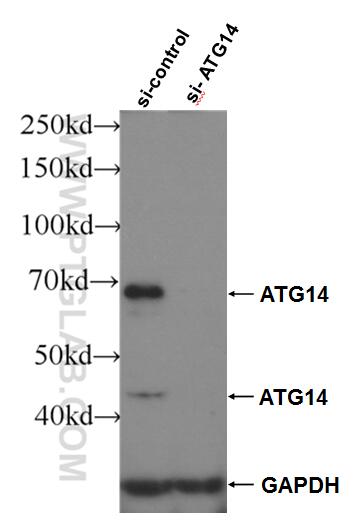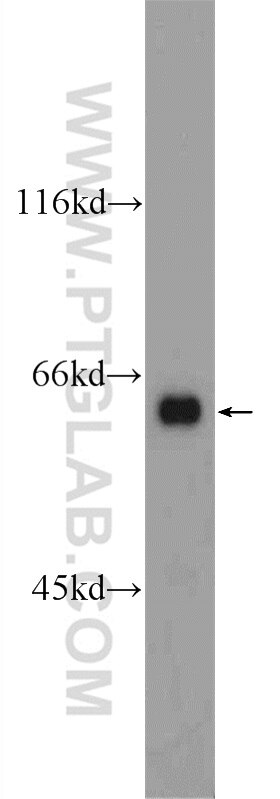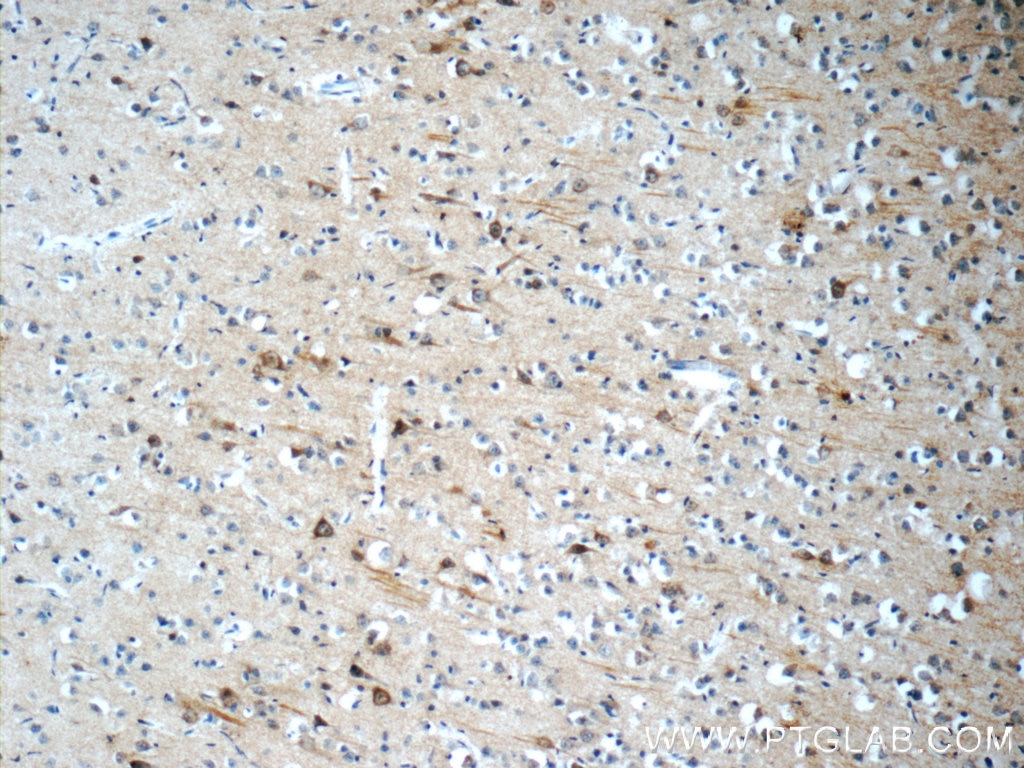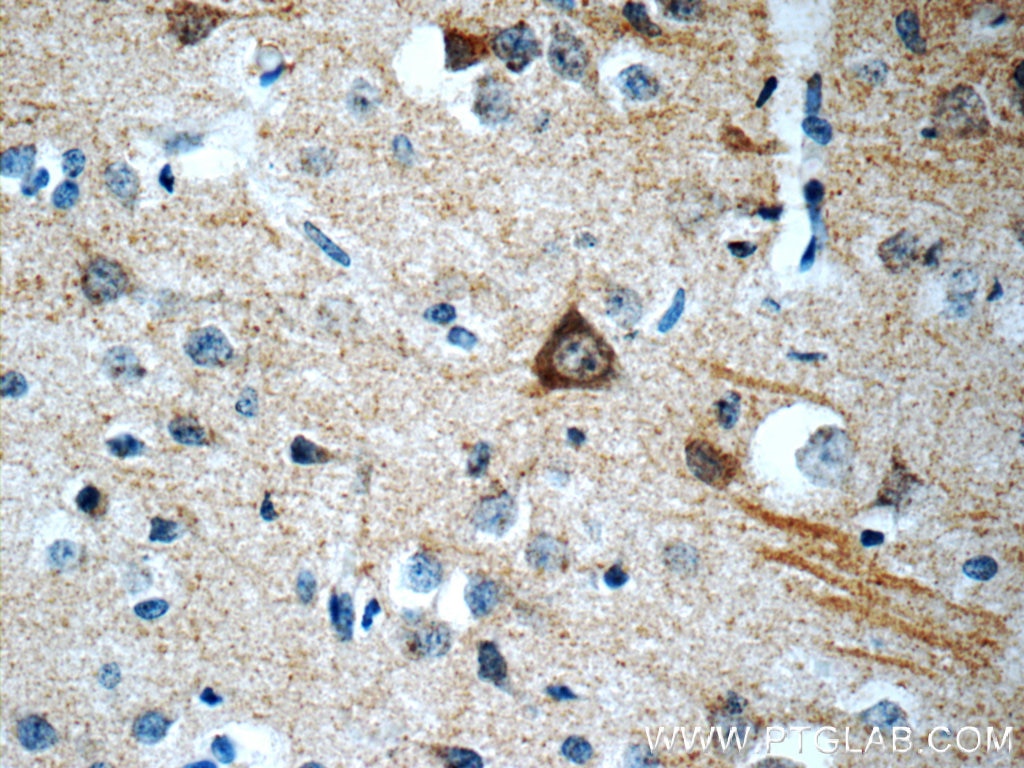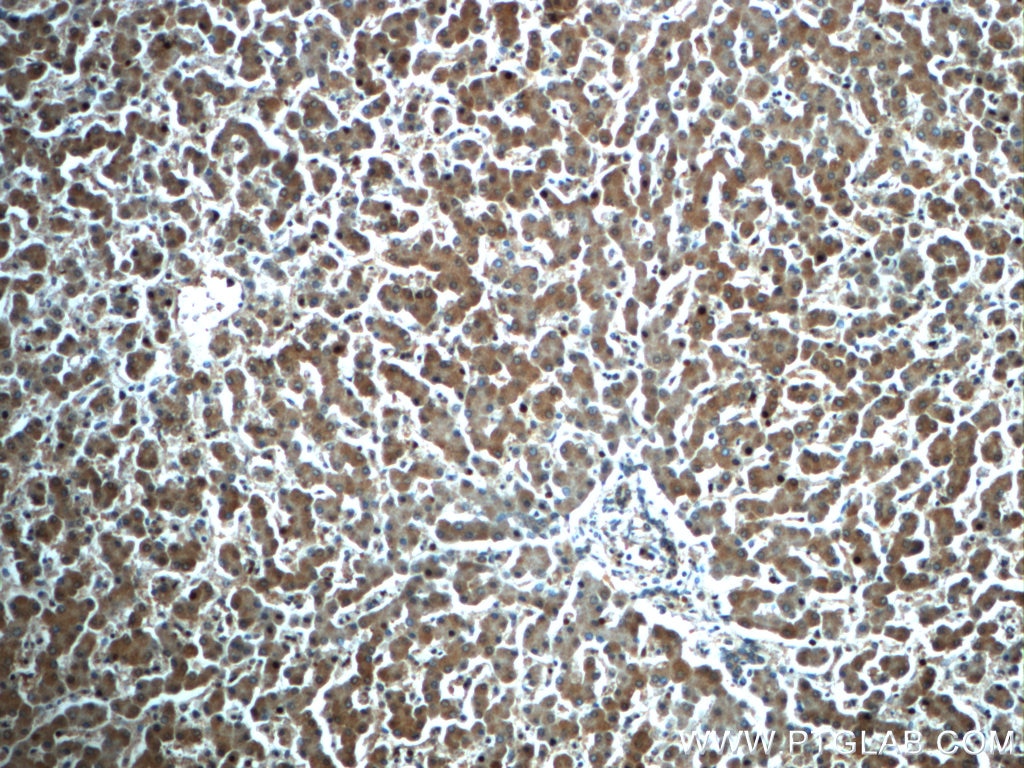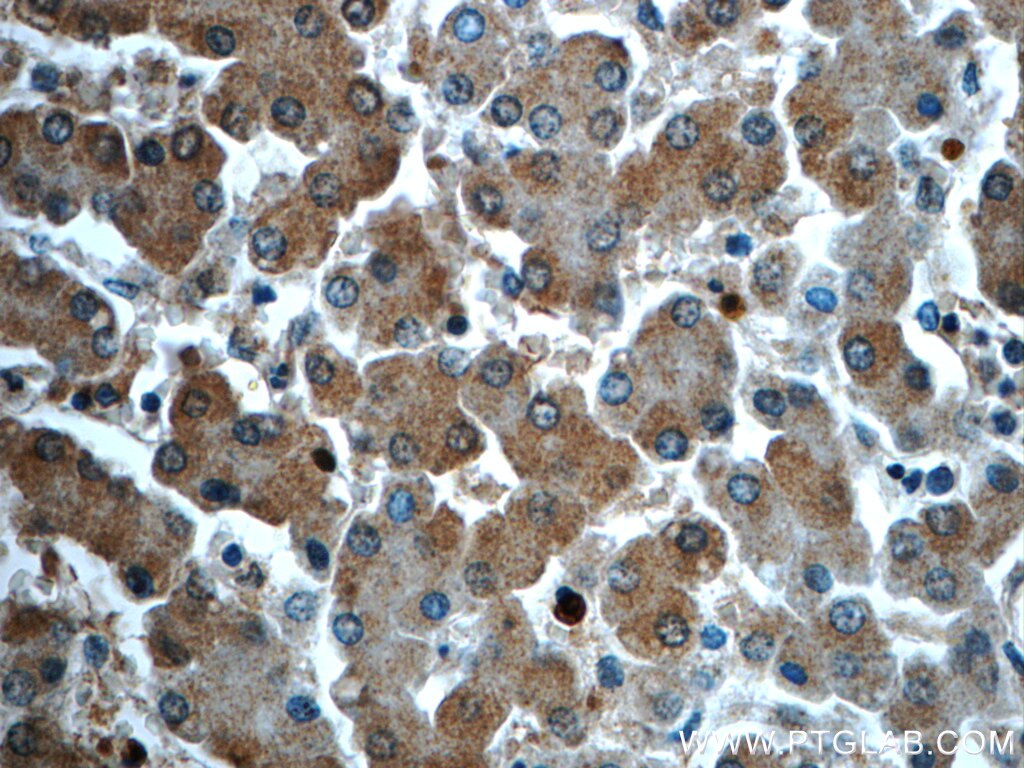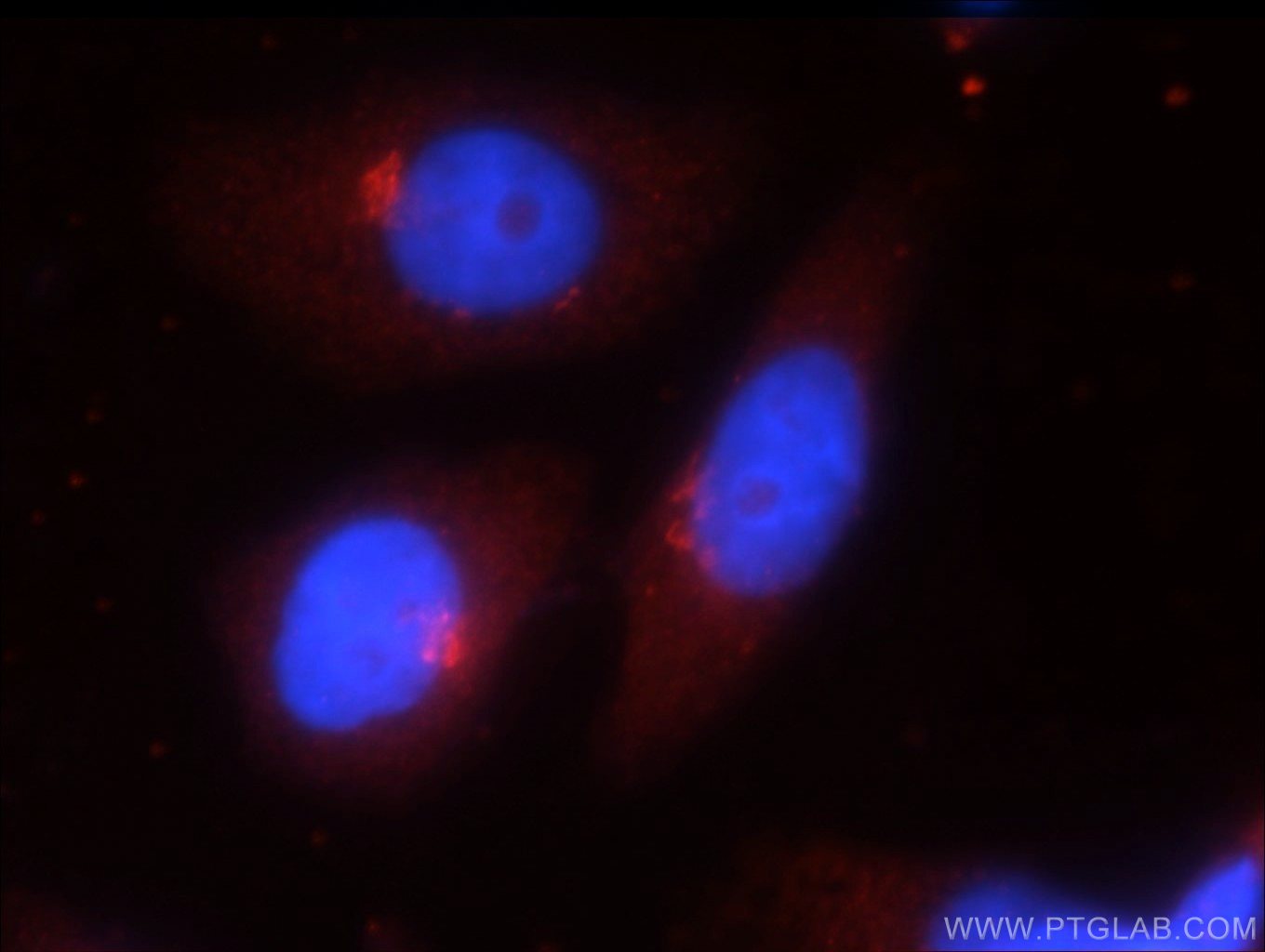- Phare
- Validé par KD/KO
Anticorps Polyclonal de lapin anti-ATG14/Barkor (C-terminal)
ATG14/Barkor (C-terminal) Polyclonal Antibody for WB, IF, IHC, ELISA
Hôte / Isotype
Lapin / IgG
Réactivité testée
Humain, souris
Applications
WB, IHC, IF/ICC, ELISA
Conjugaison
Non conjugué
N° de cat : 24412-1-AP
Synonymes
Galerie de données de validation
Applications testées
| Résultats positifs en WB | tissu cérébral de souris, cellules HeLa |
| Résultats positifs en IHC | tissu cérébral humain, tissu hépatique humain il est suggéré de démasquer l'antigène avec un tampon de TE buffer pH 9.0; (*) À défaut, 'le démasquage de l'antigène peut être 'effectué avec un tampon citrate pH 6,0. |
| Résultats positifs en IF/ICC | cellules HeLa |
Dilution recommandée
| Application | Dilution |
|---|---|
| Western Blot (WB) | WB : 1:500-1:1000 |
| Immunohistochimie (IHC) | IHC : 1:20-1:200 |
| Immunofluorescence (IF)/ICC | IF/ICC : 1:10-1:100 |
| It is recommended that this reagent should be titrated in each testing system to obtain optimal results. | |
| Sample-dependent, check data in validation data gallery | |
Applications publiées
| WB | See 4 publications below |
| IF | See 2 publications below |
Informations sur le produit
24412-1-AP cible ATG14/Barkor (C-terminal) dans les applications de WB, IHC, IF/ICC, ELISA et montre une réactivité avec des échantillons Humain, souris
| Réactivité | Humain, souris |
| Réactivité citée | Humain, souris |
| Hôte / Isotype | Lapin / IgG |
| Clonalité | Polyclonal |
| Type | Anticorps |
| Immunogène | ATG14/Barkor (C-terminal) Protéine recombinante Ag19707 |
| Nom complet | KIAA0831 |
| Masse moléculaire calculée | 492 aa, 55 kDa |
| Poids moléculaire observé | 65-68 kDa, 42 kDa |
| Numéro d’acquisition GenBank | BC109090 |
| Symbole du gène | ATG14 |
| Identification du gène (NCBI) | 22863 |
| Conjugaison | Non conjugué |
| Forme | Liquide |
| Méthode de purification | Purification par affinité contre l'antigène |
| Tampon de stockage | PBS avec azoture de sodium à 0,02 % et glycérol à 50 % pH 7,3 |
| Conditions de stockage | Stocker à -20°C. Stable pendant un an après l'expédition. L'aliquotage n'est pas nécessaire pour le stockage à -20oC Les 20ul contiennent 0,1% de BSA. |
Informations générales
Barkor, also named as ATG14, Atg14L and KIAA0831, is named as Beclin 1-associated autophagy-related key regulator protein. The function of Barkor in autophagy has been manifested in several assays, including stress-induced LC3 lipidation, autophagosome formation, and Salmonella typhimurium amplification. A major band around 65-68 kDa and a light band around 42 kDa can be observed in western blot which may be caused by alternative splicing of ATG14. The specificity of ATG14 antibody has been tested by siRNA test.
Protocole
| Product Specific Protocols | |
|---|---|
| WB protocol for ATG14/Barkor (C-terminal) antibody 24412-1-AP | Download protocol |
| IHC protocol for ATG14/Barkor (C-terminal) antibody 24412-1-AP | Download protocol |
| IF protocol for ATG14/Barkor (C-terminal) antibody 24412-1-AP | Download protocol |
| Standard Protocols | |
|---|---|
| Click here to view our Standard Protocols |
Publications
| Species | Application | Title |
|---|---|---|
Cell Death Differ ATG4D is the main ATG8 delipidating enzyme in mammalian cells and protects against cerebellar neurodegeneration. | ||
J Cell Sci Syntaxin 17, an ancient SNARE paralog, plays different and conserved roles in different organisms. | ||
Microb Pathog Roles of bovine viral diarrhea virus envelope glycoproteins in inducing autophagy in MDBK cells. | ||
Exp Eye Res Inhibiting miR-129-5p alleviates inflammation and modulates autophagy by targeting ATG14 in fungal keratitis. | ||
EMBO Rep An ULK1/2-PXN mechanotransduction pathway suppresses breast cancer cell migration |
